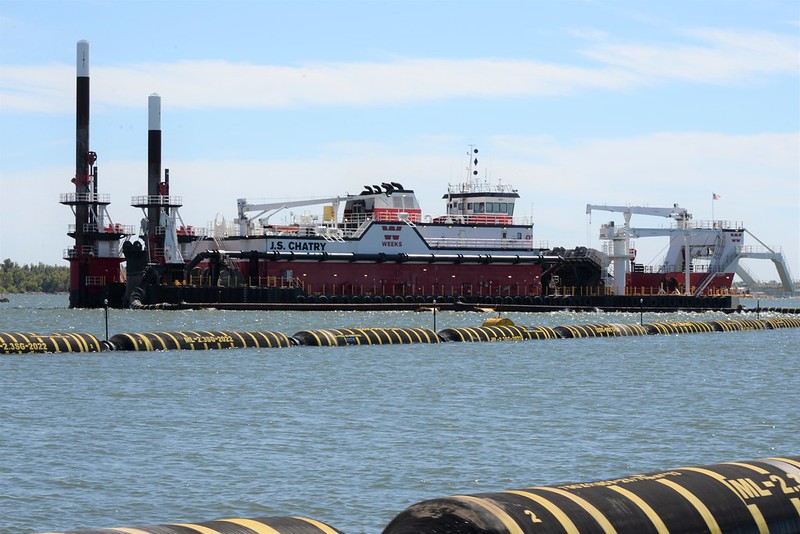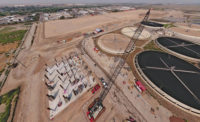An emergency barrier sill built underwater near Myrtle Grove, La., has halted a wedge of salt traveling up the Mississippi River that has come perilously close to local drinking water intakes.
“The toe of the wedge is at the sill, but the sill is holding it in place,” says Matt Roe, a spokesman for the U.S. Army Corps of Engineers’ New Orleans district.
Contractor Weeks Marine began work Oct. 11 on the emergency underwater levee to prevent the wedge from the Gulf of Mexico from moving any farther upriver. Over the course of two weeks, construction crews dredged sediment from a previously identified site to build the 35-ft sill at River mile 63.5, a little more than ten miles away from the closest municipal drinking water intakes.
The Corps is monitoring salinity levels to make sure the underwater levee was built to a sufficiently high elevation to keep the wedge behind it, says Roe. Without the sill to stop it, salinity levels near municipal drinking water intakes would have surpassed the U.S. Environmental Protection Agency chloride standard of 250 parts per million, according to the Corps.
Saltwater wedges are a naturally occurring phenomenon but have become more common at the mouth of the Mississippi, where it meets the Gulf of Mexico, as a result of congressionally mandated efforts to deepen the ship channel, according to the Corps. Because saltwater is denser than freshwater, it amasses into a wedge shape and moves upstream along the bed of the river. The wedge this year extended about 20 ft from the toe at the base to the river’s surface.
Normally, when river water is sufficiently deep, the velocity of the moving water is fast enough—around 300,000 cu ft per second or more—to push the wedge into retreat. But the current drought has lowered water levels to the point that a sizable wedge was able to move upstream, the Corps explains.
Plaquemines Parish inn Louisiana had purchased reverse osmosis equipment to potentially treat the water as part of a mitigation plan if saltwater did infiltrate the intakes, according to Kirk Lepine, parish president.
Since the Corps deepened the lower Mississippi River ship channel from 40 ft to 45 ft in 1987, similar wedges have occurred in 1988, 1999 and 2012. Roe says based on what the Corps learned in 2012, it was able to move up and extend its timelines for monitoring for saltwater intrusion.
“As we were tracking this, we were able to get contracts in place and begin construction … proactively,” he says.
A $238-million effort to deepen the lower river ship channel to 50 ft is currently underway.






Post a comment to this article
Report Abusive Comment